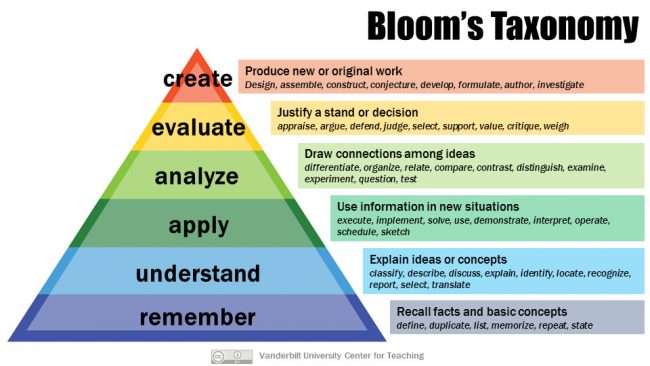Week Seven
Learning Objectives
Model of relationship between the creation of individual course materials against the backdrop of larger course outcomes. All course content, activities, and assessments should have a direct relationship and/or alignment with pre-determined competencies outlined as objectives, for both the course and sub-modules.

| SAMPLE TOPIC TO ILLUSTRATE THE DIFFERENCE BETWEEN COURSE AND MODULE OUTCOMES – Digital Literacy Course |
| Course Learning Outcomes |
| · Locate – relevant information using tools appropriate to their discipline and needs · Evaluate – facts and information by considering the following: authority, validity, and bias · Demonstrate – an understanding of the ethical dimensions of using, creating, and disseminating information |
| Course Learning outcomes are umbrella phrases covering the ultimate goals of a course or program before the subsequent parts of the learning design are built. As shown in this example, course learning outcomes are a broad overview of the long-term results and higher-order thinking skills that should be obtained by learners after taking the entire course and succeeding through assessments all the way to course completion. |
| ————————————————————————————————————————————————————— |
| Learning Outcomes (Objectives) |
| · Discover – the importance of online security and be able to implement measures to protect their digital identity · Spell out in detail – an understanding of responsible digital citizenship and ethical behavior in online communities · Identify – and critically assess digital media, distinguishing reliable sources from misinformation with examples |
| A learning outcome, under the course umbrella, narrows a statement of goals to become specific about what learners will be able to do after completing a learning experience. Written as action verbs, they are measurable, meaningful, and achievable. |

WORKS CITED
Course Learning Outcomes | Course Map Guide. (2016). Course Map Guide. https://www.coursemapguide.com/learning-outcomes
Mcdaniel, Rhett. “Bloom’s Taxonomy.” Vanderbilt University, Vanderbilt University, 10 June 2010, cft.vanderbilt.edu/guides-sub-pages/blooms-taxonomy/.

